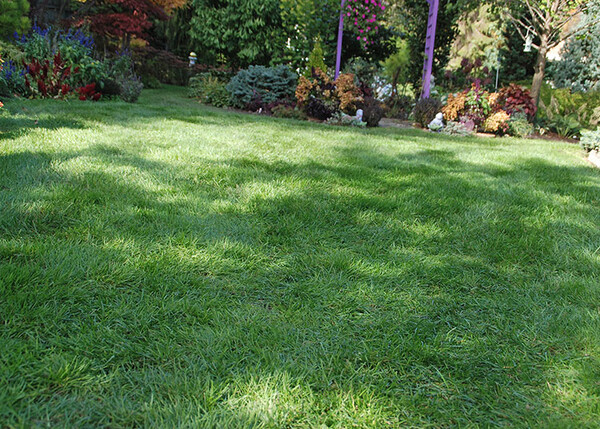 by Melinda Myers
by Melinda Myers
As summer transitions into fall, it is time to help lawns recover from summer stress. Let the weather and the condition of your lawn help you develop a plan suited to your landscape.
Continue mowing actively growing lawns. Mow high, leaving cool season grasses like bluegrass and fescues at least 2 ½ preferably 3 ½ inches tall after cutting. Warm season grasses like bermudagrass, carpetgrass, centipedegrass and zoysia should be grown at 1 to 2 inches tall, while St. Augustine should a bit higher at 2 to 3 inches for best results. Taller grass is better able to compete with weeds, is more drought tolerant and less susceptible to insects and disease.
Mow often, removing no more than one third the total height. Leave short clippings on the lawn. They will quickly break down, adding organic matter, moisture and nutrients to the soil. Run your mower over long clippings to reduce their size and speed decomposition.
As the tree leaves begin to fall just mow them into small pieces and leave them on the lawn. As long as you can see the grass blades through the shredded leaves your lawn will be fine. And just like the clippings, they add nutrients and organic matter to the soil.
Fertilize lawns in early September and high maintenance northern lawns again around Halloween, but always before the ground freezes. Make sure the last fertilizer application to warm season grasses is at least one month prior to the average first killing frost.
A healthy lawn is the best defense against weeds. Even with proper care these unwanted plants can bully their way into your lawn. Try digging, root and all, to remove small populations of weeds. Think of it as a workout or way to reduce stress.
If you decide to use a weed killer, try spot treating weeds or problem areas to minimize the amount of chemical used. Select the least toxic or an organic product whenever possible. Whether using traditional or environmentally friendly products read and follow label directions carefully. All these products are plant killers and can cause damage to other plants if not applied properly.
Fall, when the cool season grasses are actively growing, is also the best time to core aerate or dethatch lawns suffering from thatch build up or compacted soil. Overseed thin lawns after core aeration or dethatching. You’ll have better results once the thatch layer is removed or openings exist for the grass seeds to contact the soil and sprout.
Those growing warm season grasses should wait until the lawn greens up in spring or is actively growing in early summer. Avoid doing this when the weather is hot and dry.
Begin implementing some of these strategies and soon you’ll be on your way to a healthier, better looking lawn for the coming growing season.
Melinda Myers is the author of more than 20 gardening books, including Small Space Gardening. She hosts The Great Courses “How to Grow Anything” DVD series and the nationally-syndicated Melinda’s Garden Moment TV & radio program. Myers is a columnist and contributing editor for Birds & Blooms magazine and her web site is www.MelindaMyers.com. Photo courtesy of MelindaMeyers.com.













